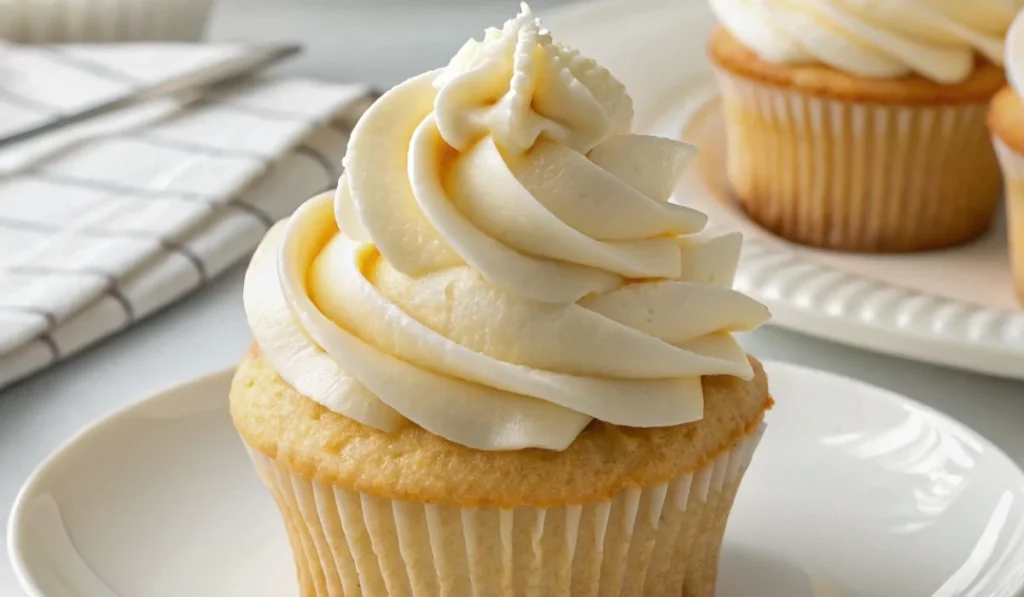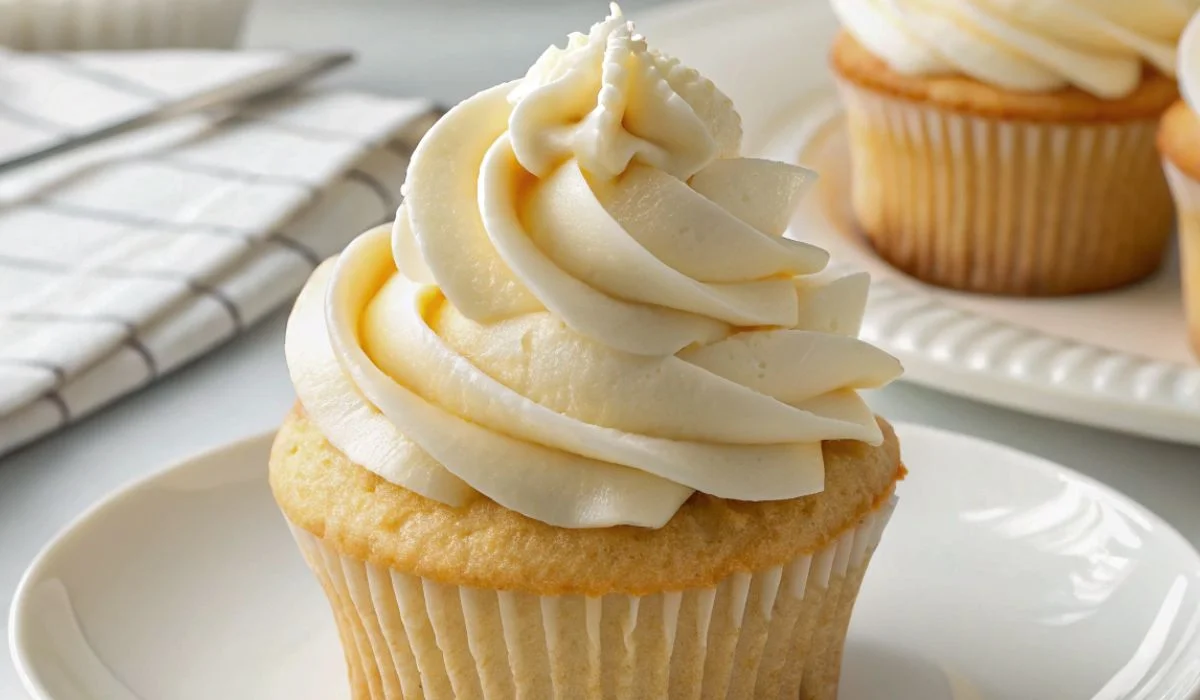Finding the perfect buttercream frosting recipe can feel like a baking adventure that never ends. I learned this the hard way when I attempted to make my daughter’s first birthday cake. The frosting turned out grainy, too sweet, and looked nothing like the smooth, creamy dream I had imagined.
After years of baking and countless trials, I discovered that making perfect buttercream comes down to understanding a few key principles. This recipe creates silky, pipeable frosting that tastes incredible and looks professional.

What Makes Great Buttercream Frosting
Great buttercream starts with quality ingredients at the right temperature. Room temperature butter whips to perfection, creating that light, fluffy texture we all love. Cold butter creates lumps, while warm butter makes the frosting too loose.
The secret lies in the technique. Adding powdered sugar gradually prevents a sugar explosion in your kitchen. Sifting eliminates lumps that can clog piping tips later.
Essential Ingredients for Success
- Unsalted Butter (1 cup, room temperature) – Use unsalted butter for better control over flavor. Different brands contain varying salt amounts, so adding salt separately ensures consistent results every time.
- Confectioner’s Sugar (1 pound) – Sift your powdered sugar before using. This step prevents lumps and creates smoother frosting. Trust me, your piping tips will thank you later.
- Heavy Whipping Cream (3 tablespoons) – Cream adds richness and helps achieve the perfect consistency. You can substitute milk, but cream creates superior texture and flavor.
- Vanilla Extract (1 tablespoon) – Use real vanilla extract, not artificial flavoring. The difference in taste is remarkable and worth the extra cost.
- Salt (1/2 teaspoon) – Salt enhances sweetness and balances the overall flavor profile of your frosting.
Step-by-Step Instructions
- Prepare Your Butter. Ensure your butter reaches room temperature before starting. It should give slightly when pressed but not feel warm or greasy.
- Cream the Base. Beat butter and salt in a stand mixer for one minute using the paddle attachment. The mixture should look light and fluffy.
- Add Sugar Gradually. Sift powdered sugar directly into the bowl in three batches. Mix on low speed after each addition to prevent sugar clouds. Scrape the bowl sides between additions.
- Create the Perfect Texture. Add one tablespoon of cream while mixing on low speed. Pour in vanilla extract and beat until the mixture becomes smooth and even.
- Adjust Consistency. Add remaining cream gradually until you reach your desired consistency. For spreading, use all the cream. For piping, keep it slightly thicker.
Professional Tips from Experience
- Temperature Matters If your butter is too cold, cut it into small pieces and microwave at 50% power for 10-second intervals. Flip pieces between intervals until softened.
- Avoid Overmixing Stop mixing once ingredients combine evenly. Overmixing incorporates too much air, creating unstable frosting.
- Fix Common Problems Grainy frosting usually means the butter was too cold or the sugar wasn’t sifted. Runny frosting indicates warm butter or too much liquid.
Creative Flavor Variations
This base recipe accepts endless flavor modifications. Try these popular options:
- Chocolate: Add 1/2 cup cocoa powder
- Lemon: Replace vanilla with lemon extract and add zest
- Coffee: Mix in 2 tablespoons instant coffee powder
- Berry: Blend in 1/4 cup berry puree
Storage and Make-Ahead Tips
Store finished frosting in the refrigerator for up to one week. Before using chilled frosting, bring it to room temperature and whip briefly to restore texture.
You can freeze buttercream for up to three months. Thaw completely, then re-whip before using.
When to Use This Recipe
This buttercream works perfectly for:
- Birthday cakes and cupcakes
- Layer cakes requiring stability
- Piping decorations and borders
- Sheet cakes needing smooth coverage
Troubleshooting Common Issues
- Buttercream Too Sweet. Add a pinch more salt to balance flavors.
- Won’t Hold Shape. Chill for 15 minutes, then re-whip.
- Separates or Curdles. Your butter temperature was off. Continue beating; it usually comes together.
The Final Result
This buttercream frosting recipe delivers consistent, professional results every time. The smooth texture pipes beautifully and tastes incredible. Whether you’re decorating cupcakes for a bake sale or creating an elaborate birthday cake, this recipe provides the perfect foundation.
Remember, baking is about creating joy and memories. Don’t stress about perfection. Even slightly imperfect buttercream tastes amazing and brings smiles to faces around your table.
Start with quality ingredients, follow the steps carefully, and trust the process. Your cakes and cupcakes will never be the same.

Easy Buttercream Frosting
Ingredients
Equipment
Method
- Prepare the butter: Ensure your butter reaches room temperature before starting. It should give slightly when pressed but not feel warm or greasy.
- Cream the base: Beat butter and salt in a stand mixer for one minute using the paddle attachment. The mixture should look light and fluffy.
- Add sugar gradually: Sift powdered sugar directly into the bowl in three batches. Mix on low speed after each addition to prevent sugar clouds. Scrape the bowl sides between additions.
- Create the perfect texture: Add one tablespoon of cream while mixing on low speed. Pour in vanilla extract and beat until the mixture becomes smooth and even.
- Adjust consistency: Add remaining cream gradually until you reach your desired consistency. For spreading, use all the cream. For piping, keep it slightly thicker.
